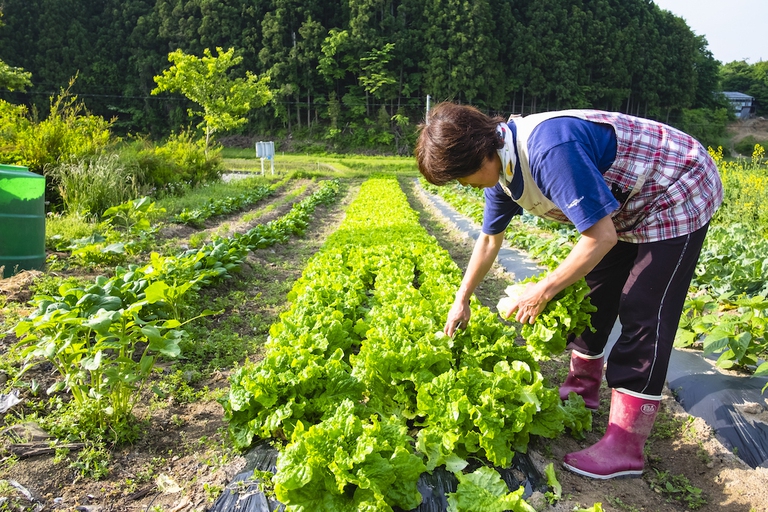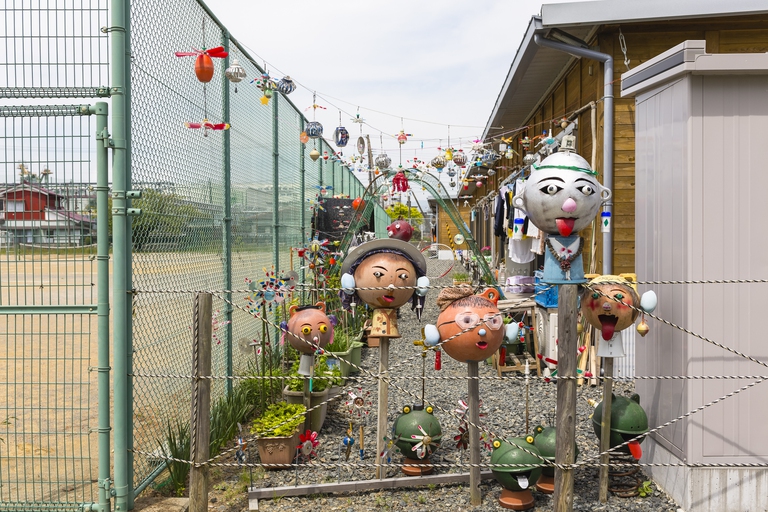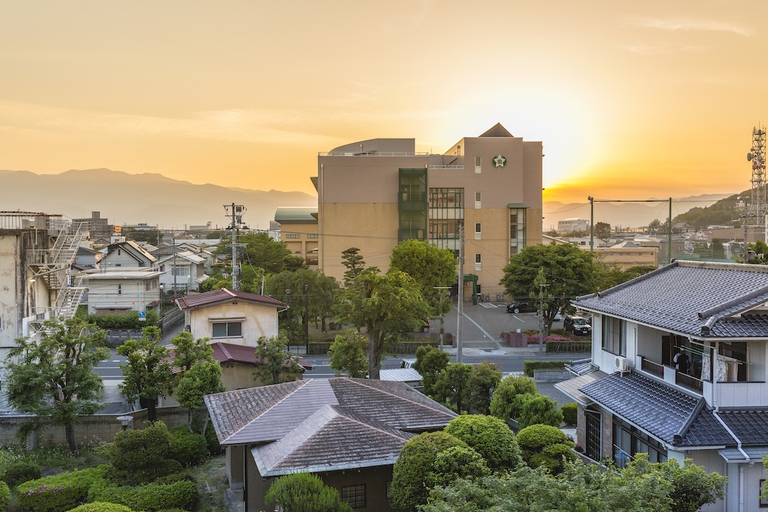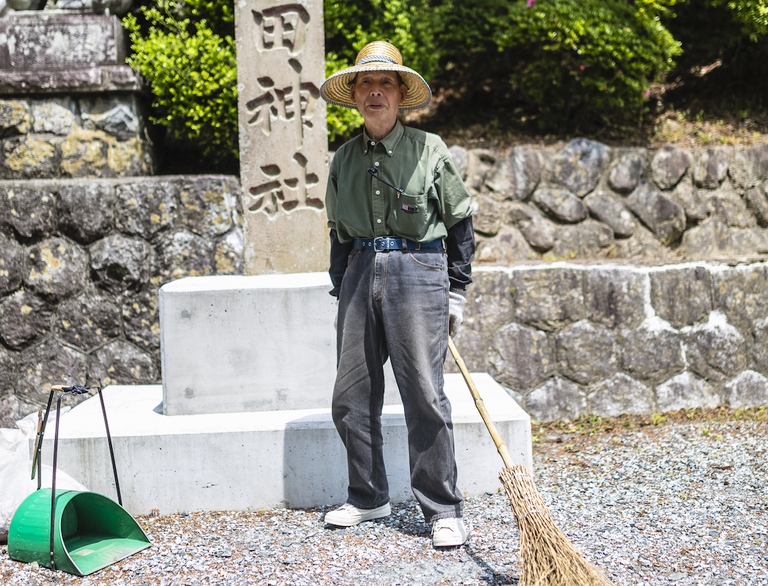
The government of Tanzania is currently planning to evict more than 80.000 indigenous Maasai people from their ancenstral land
The scene isn’t post-apocalyptic as one might expect. Fukushima, now, seems like any other place – underpopulated but ordinary. In 2016 we visited the prefecture on the northeastern coast of Japan, over 200 kilometres north of the capital Tokyo, to talk to those who are committed to getting their lives back on track after the earthquake, tsunami
The scene isn’t post-apocalyptic as one might expect. Fukushima, now, seems like any other place – underpopulated but ordinary. In 2016 we visited the prefecture on the northeastern coast of Japan, over 200 kilometres north of the capital Tokyo, to talk to those who are committed to getting their lives back on track after the earthquake, tsunami and nuclear disaster that brought Japan to its knees on the 11th of March 2011.
Read more: The people of Fukushima. A journey of renewal five years after the disaster
The epicentre of the Tōhoku earthquake of magnitude 9.1 that hits at 14:46 is registered off the coast of Japan’s eastern coast, 160 kilometres from the Fukushima Daiichi nuclear power plant. The tsunami generated by the seismological event reaches up to 40.5 metres of “runup”, that is the height of the wave once it crashes onto the coast compared to sea level. It inundates 561 square kilometres of land and is the principal cause of death in those tragic days: 15,891 people lose their lives and 2,584 are still missing according to the Japanese National Police Agency.
The flooding isn’t stopped by the seawalls that are meant to protect the Fukushima Daiichi nuclear power plant owned by the Tokyo Electric Power Company (TEPCO) – Japan’s largest electric utility – from events such as these, causing a blackout that leads to the failure of the systems that cool the six nuclear reactors present in the coastal plant, including backup ones. The levels of the cooling pools fall exposing the nuclear fuel rods: their surface reacts with air causing the release of hydrogen, provoking explosions in reactors number 1, 2 and 3. In these same reactors overheating leads to the meltdown of the cores and the release of great quantities of radiation.
The event is known in Japanese as Fukushima genpatsu-shinsai: from genpatsu, nuclear plant; shin, earthquake; and sai, disaster. Its gravity is classified as level 7 on the International Nuclear and Radiological Event Scale (INES), the maximum possible level and one reached only by the Chernobyl disaster.
By the end of 2011 167 Fukushima Daiichi workers receive radiation doses above 100 millisieverts (0.1 sievert) – that is the annual limit above which cancer is more likely to develop – according to TEPCO. The release of radiation is such that in February 2017 TEPCO reports levels equal to 530 sieverts inside reactor number 2.
The health impacts of exposure especially to the radionuclides iodine-131 and caesium-137 aren’t yet certain. According to organisations such as Physicians for Social Responsibility and International Physicians for the Prevention of Nuclear War, both US-based and opposed to atomic energy, Japan could be affected by 10,000 to 60,000 extra cases of cancer due to to the Fukushima nuclear incident. On the other hand, an article published by the American Association for the Advancement of Science states that the increase in the incidence of thyroid cancer in children recorded in the prefecture since 2011, for example, is due to the establishment of a more rigorous system of health checks compared to what was in place before the genpatsu-shinsai.
One of the major impacts felt by hundreds of thousands of residents is the evacuation from their homes because of the release of radiation. The limit of the “exclusion zone” established on the 13th of March 2011 corresponds to a 20-kilometre radius from the Daiichi plant and is then extended to include areas on the path of northeastern winds carrying radiation. At its peak the number of evacuees was 470,000 according the Japanese Reconstruction Agency.
Gradually in the last six years the Japanese government has allowed that part of the exclusion zone be repopulated. But many residents haven’t returned (99,000 in February 2016 according to the Reconstruction Agency): worried by the health impacts of radiation, they’ve settled elsewhere. Notwithstanding, the inhabitants of Nihonmatsu, Minamisōma, Tamura, Kawauchimura and the city of Fukushima, the prefecture’s administrative centre, haven’t been discouraged.
From those residing in the exclusion zone who have returned after years of absence – such as Shigeru Yamasawa who reopened his restaurant Urashima Sushi when the evacuation order was still in place, to serve mainly workers involved in decontamination efforts – to those living in areas considered officially “safe” and who have never left their homes if not for brief intervals – such as Kazue Morizono who after suffering health problems due to radiation exposure has become an activist demanding that TEPCO bosses be punished and Japan stops producing nuclear energy. Unfortunately it seems that prime minister Shinzo Abe hasn’t heeded her demands. Even on the eve of the disaster’s fifth anniversary he confirmed that the country, “can’t do without nuclear power”.
If the Japanese government doesn’t want to learn the lesson that hundreds of thousands of its citizens have been burdened with, what is left is to keep giving voice to the movement against nuclear power and the stories of who, like the people of Fukushima, have seen its devastating effect up close. People projected towards the future – with or without atomic energy – who are facing the challenge of returning to “normality” with dignity, determination and ingenuity. People committed to reassuring the rest of the country and the world that Fukushima isn’t a no-go area, that the products of its ancient agricultural tradition are safe to eat and that we mustn’t feel pity for them. Instead, we should be in awe of the tenacity, silent but strong, of a people who want to be reborn.
Siamo anche su WhatsApp. Segui il canale ufficiale LifeGate per restare aggiornata, aggiornato sulle ultime notizie e sulle nostre attività.
![]()
Quest'opera è distribuita con Licenza Creative Commons Attribuzione - Non commerciale - Non opere derivate 4.0 Internazionale.
The government of Tanzania is currently planning to evict more than 80.000 indigenous Maasai people from their ancenstral land
A new UNU-INWEH report on the global bottled water industry reveals the massive scale of this market and the lack of strict quality controls.
Isatou Ceesay founded a social enterprise that is helping to fight plastic pollution and empowering women and young people to gain economic independence.
In 2020, Mihela Hladin made a radical decision that many, in recent times, have probably considered. This is her story, with photos by Matt Audiffret.
The Brazilian government has started evicting illegal gold miners, responsible for the health emergency that has hit the Yanomami people.
Asur culture and tradition in West Bengal are on the brink of extinction due to age-old religious stigma and the apathy of the state government.
Oxfam report reveals that since 2020, for every dollar earned by those in the poorest 90 per cent of humanity, a billionaire has earned 1.7 million.
In an extraordinary example of women’s empowerment, a market in India’s Manipur state has been run entirely by women for the past 500 years.
With all eyes currently fixed on the war in Ukraine, Paralympians competing in Beijing can show us the bright side of international cooperation.












